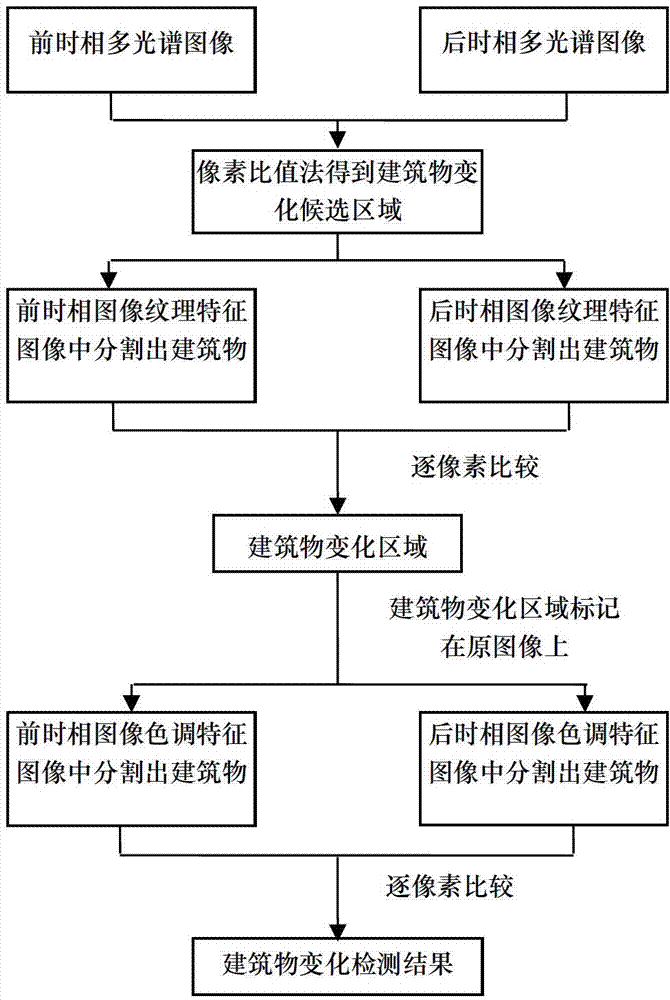Detection method for building change by multispectral image
A multi-spectral image and change detection technology, applied in image analysis, image data processing, instruments, etc., can solve problems such as difficult to determine rules and cumbersome process, and achieve the effect of reducing false detection rate, obvious difference, and reducing dependence.
- Summary
- Abstract
- Description
- Claims
- Application Information
AI Technical Summary
Problems solved by technology
Method used
Image
Examples
Embodiment
[0023] 1. First, introduce the principle of pixel level change detection based on the pixel ratio method used in the present invention.
[0024] The most basic change of the building in the remote sensing image is the change of the pixel gray value. Therefore, the pixel gray value can also be regarded as the basic feature of the image. Pixel-level change detection is defined as the direct calculation of the pixel value of the two-phase image to construct a difference image and obtain the change area according to a certain discrimination rule. Commonly used pixel-level change detection methods mainly include pixel difference method, pixel ratio method, and image regression method. The pixel difference method is simple and straightforward to implement, but many small fragments will appear during change detection. The pixel ratio method can reduce the influence of the sun's angle and terrain during image acquisition, but the result of the ratio method is often non-normal distributi...
PUM
 Login to View More
Login to View More Abstract
Description
Claims
Application Information
 Login to View More
Login to View More - R&D
- Intellectual Property
- Life Sciences
- Materials
- Tech Scout
- Unparalleled Data Quality
- Higher Quality Content
- 60% Fewer Hallucinations
Browse by: Latest US Patents, China's latest patents, Technical Efficacy Thesaurus, Application Domain, Technology Topic, Popular Technical Reports.
© 2025 PatSnap. All rights reserved.Legal|Privacy policy|Modern Slavery Act Transparency Statement|Sitemap|About US| Contact US: help@patsnap.com



